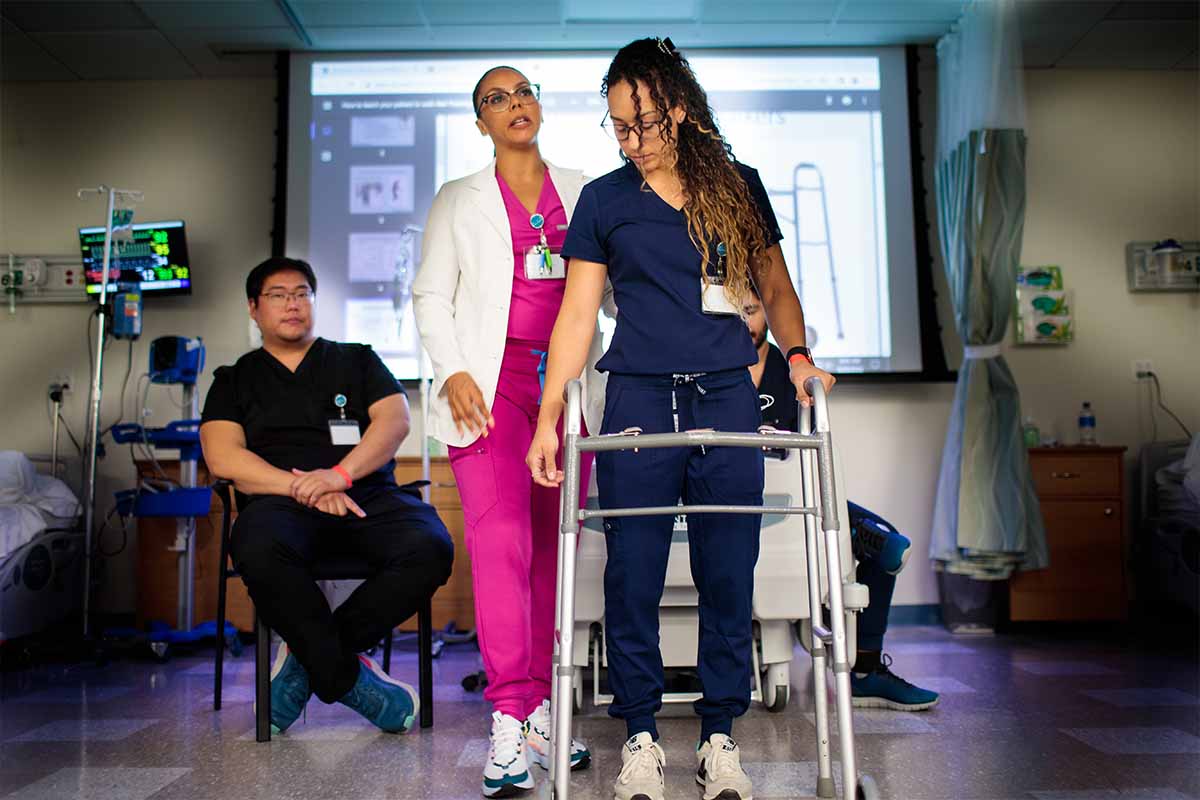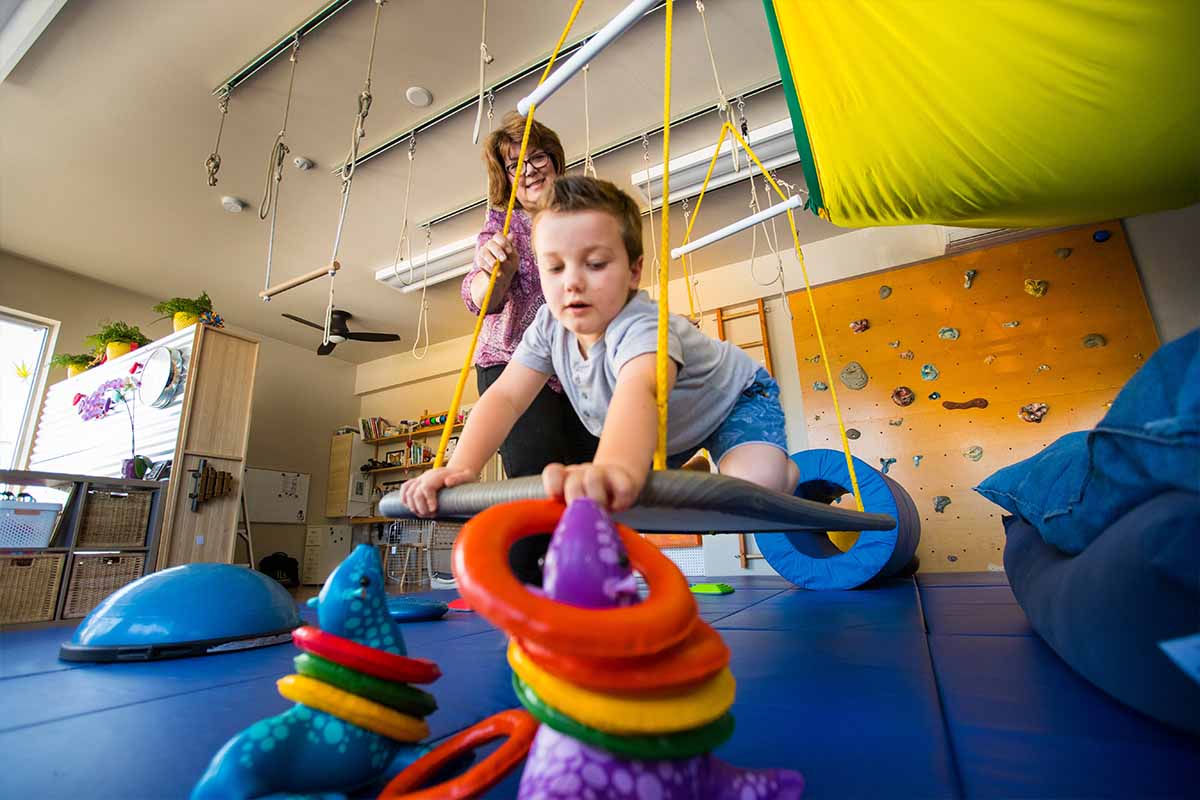According to the U.S. Department of State, 27 million people are trafficked each year worldwide. Approximately 18,000 of those victims are in the U.S.
The University of San Diego and Point Loma Nazarene University released a study in 2016 showing that there are at least 3,000 trafficking victims per year in San Diego County. Today, that number may be as high as 8,000.
In an area with a desperate need of prevention and suppression of human traffickers, the University of St. Augustine for Health Sciences (USAHS) Doctor of Occupational Therapy (OTD) graduate, Dr. Margaux Mariano, found a way to apply occupational therapy interventions to help its survivors.
“This is happening in our own backyards,” Dr. Mariano said. “The fact that OT can address treatment practice, education, research, and even advocacy for human trafficking survivors, I feel like we can make an impact with this population.”
Occupational Therapy Intervention Programming

For her OTD capstone project, Dr. Mariano chose to focus on an emerging practice area in OT. After literature review, she landed on the human trafficking survivor population. With the help of OT program director Dr. Erin Schwier, Dr. Mariano was able to connect with the Bilateral Safety Corridor Coalition (BSCC) in San Diego for the project.
According to its website, “The Bilateral Safety Corridor Coalition is an alliance of over 60 government and nonprofit agencies in the United States and Latin America that is convened in and along the U.S.-Mexico Border Region to combat slavery and human trafficking.”
Dr. Mariano spent the first month at BSCC doing a needs assessment test at the site and spending time with the clients to figure out a plan to work towards their independence. Month two she started charting and documenting to find patterns and discover what the clients wanted and needed in their lives to enhance their overall wellbeing.
“Coming into this setting where nobody knew what OT is, the clients but also the staff, I had to keep defining it, showing it, implementing it and trying to broaden our scope to prove what OT can do,” she said.
Dr. Mariano said there are more barriers when working with this population including mental health issues, legal policies, law enforcement, and the stigma surrounding the survivors’ trauma. All these factors affect their daily performance and abilities to function independently in their communities.
She expected clients to want more leisure activities such as dance therapy or art, but the clients wanted to focus on employment. According to the American Occupational Therapy Association’s article ‘Occupational Therapy’s Role in Case Management’, “Occupational therapy practitioners in a case manager role can use their skills to motivate, guide, and promote client confidence.”
Dr. Mariano explained that case management and OT have the same goals for their clients, living independently and reintegrating clients into the community, however OT has the tools and methods to facilitate that independence for the clients so there is follow through for their future. She also gave the example that a case manager helps set up an appointment for a client and drives the client there. An OT would help the client navigate the community (public transportation) in order to get to the appointment on their own.
“This is important for human trafficking because the overall goal is getting them through their Victim phase to Survivor and ultimately to ‘Thrivor’,” she said.
She focused on four areas of employment-based programming:
- Career Exploration – finding their passion
- Employment seeking – finding appropriate jobs in appropriate locations and getting integrated in the community in which they will work
- Interview simulations – how to dress and communicate professionally
- Employment skills – overall professionalism and skills needed to attain the job
“I was nervous to focus on employment because with the occupational therapy profession, everyone assumes occupation equals employment,” Dr. Mariano said. “But that’s what the clients were ready for, that independence and desire to make their own living.”
Her programming also included an extended involvement with USAHS OT students in hopes that they enhance her ideas and create new ones. USAHS students will continue working with the organization into 2021 and expectantly beyond.
Case Management Through an Occupational Therapy Lens
“OT is a unique profession and we can often appear to ‘blur’ to others. However, our focus is always on supporting people to do the occupations (meaningful activities) that are important in their lives no matter what the limitation,” Dr. Susan MacDermott, Assistant Professor and Doctoral Coordinator for OT programs, explained. “The limitation could come from a diagnosis, injury, environment, life event, or just a transition in life. In this situation, the limitation is from a life event of a crime that restricted the survivors’ ability to engage freely in meaningful activities as a result of the trafficking.”
Aside from her programming, Dr. Mariano also identified needs for the shelter, for the staff, and for the human trafficking community in San Diego during her capstone project at BSCC.
“Needs such as initial screening process modifications due to trouble with client concerns later for staff, staff training for crisis intervention and trauma-informed programming due to high turnover rates, community education for schools in order to address the prevention side of human trafficking,” she explained.
Dr. Mariano’s hope is to add another part to the programming for employee sustainability to ensure clients know how to keep the job they attain. Due to her success at BSCC, the Executive Director hired her as a Case Manager after she graduated from the USAHS in December 2019.
“Margaux is using her OT education and skills to enhance a case management role,” Dr. MacDermott said. “We encourage OTDs to bring their OT knowledge to new roles and populations.”
Dr. Mariano was also recently hired as a Pediatric Occupational Therapist with Family Health Center, another nonprofit organization that serves low-income and under-served communities. She’s hoping to make a connection between the two organizations where BSCC can send referrals to Family Health Center, but that relationship is still in the works.
“Before the OTD program at USAHS, I didn’t really know how far we can take OT and the many settings we fit in,” Dr. Mariano said.
“I didn’t think that we could create our own roles in different settings and I never thought in a million years that I would be one to create OT in a new setting in San Diego.”
Dr. Mariano said the skills she learned at USAHS, specifically the skills she didn’t think she would need but knew she had to grow, such as leadership and advocacy are huge for OTs in emerging practice areas.
“The skills I learned at USAHS were so important because so many people don’t know what OT is, but once they do, they realize that its purpose is huge for so many populations beyond the traditional setting,” Dr. Mariano said.







